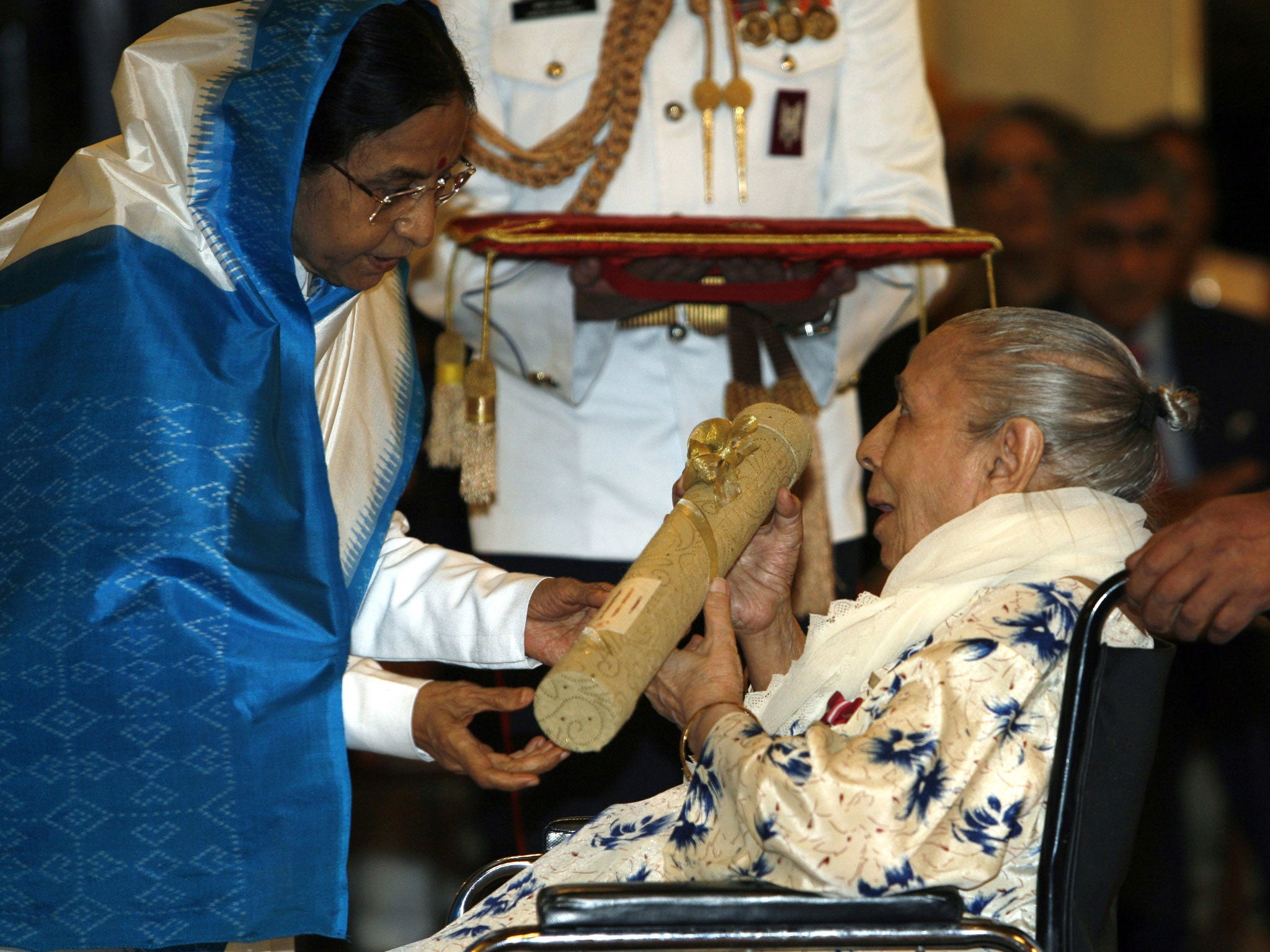Your support helps us to tell the story
From reproductive rights to climate change to Big Tech, The Independent is on the ground when the story is developing. Whether it's investigating the financials of Elon Musk's pro-Trump PAC or producing our latest documentary, 'The A Word', which shines a light on the American women fighting for reproductive rights, we know how important it is to parse out the facts from the messaging.
At such a critical moment in US history, we need reporters on the ground. Your donation allows us to keep sending journalists to speak to both sides of the story.
The Independent is trusted by Americans across the entire political spectrum. And unlike many other quality news outlets, we choose not to lock Americans out of our reporting and analysis with paywalls. We believe quality journalism should be available to everyone, paid for by those who can afford it.
Your support makes all the difference.When Shamshad Begum entered the British Raj-era film business as a playback singer, that term had not been coined. She was one of an uncredited band of behind-the-scenes vocalists who sang words through actors' lips as they mimed to pre-recorded songs.
The arrival of the first Indian talkie in 1931 created a new profession by repeating the regional theatre's trick of using songs to break up the narrative. Begum straddled the eras of anonymity and playback celebrity. She had a voice that could either melted hearts, or roar and made things right.
A Muslim, she was born in the Sikh-venerated city of Amritsar in 1919. By the age of 13 she was recording for the Jien-o-phone record label. In 1937 All India Radio Lahore opened as Punjab's only radio station. Word went out for local talent; actors, broadcasters and musicians attended. She passed the audition. Initially, she specialised in Punjabi folksongs. Her fame spread because the Lahore signal, especially at night, could reach Bahawalpur, Jhang, Montgomery (now Sahiwal), Lyallpur (now Faisalabad) and Rawalpindi.
Punjabi-language film took off slowly from 1934. This started to change with Gul Bakawli (1939) and its follow-up Yamla Jatt (1940). Both had music by the "music director" – in fact the composer – Ghulam Haider. They introduced the 11-year-old child star Noor Jehan, one of the emergent greats and, after Partition in 1947, Pakistan's foremost female playback singer. Yamla Jatt brought Shamshad Begum and a later mainstay of Bombay cinema, the actor Pran together.
Pictures were seen as wartime morale-boosters and Begum found work singing in many of the films shot in Lahore, then the hub of Punjab's regional film industry (later nicknamed "Lollywood"). "Northern Hindustani" – as Punjabi was known for census purposes – was on the brink of greater recognition and she was part of the brave new world of Punjabi arts. A measure of her impact is that Lata Mangeshkar, subsequently hailed as India's greatest female playback singer, won a talent competition in Pune by singing two of Begum's hits from Khazanchi, Haider's 1941 breakthrough film.
Haider moved to Bombay, where national rather than regional reputations were made, and Begum moved there from Lahore to Bombay. She arrived as an established regional singer with a strong reputation and Haider as her mentor. Bombay was the centre of the Hindustani film industry and she sang for both Hindi-language and, to a lesser extent, Urdu pictures.
In 1949 the industry secret that many of the actors and actresses were not doing the singing was blown. In Mahal Lata Mangeshkar was revealed to be the voice of Kamini, played on screen by the leading actress Madhubala. The heartthrob actor-singer KL Saigal and the actress-singer Suraiya were notable exceptions; although Saigal and Begum had sung in Shahjehan (1946), they did not meet. When they eventually did, he praised her singing. It was her lifelong regret that they never sang a duet.
Shamshad Begum became part of the new wave of singers whose names appeared in the opening credits. In an essay on female voices in film song in his book Light of the Universe (2003), Ashraf Aziz memorably described her as "gifted with a robust, sharp, minty voice" and continued that she had had "no difficulty in maintaining a decided edge over [male playback singers] Mukesh, Talat Mahmood and Kishore Kumar" in, respectively, Mela (1948), Babul (1950) and Naya Andaz (1956).
Of the male playback singers, only Mohammed Rafi counted as her true equal. As evidence of her as a team player, she and Asha Bhosle, Rafi and Manna Dey singing "Dukhbhare Din" in the celebrated melodrama Mother India (1957) takes some beating.
For her, the maxim that applied was the song is the thing. What she delivered for millions was the sheer entertainment value – and, sometimes, mystery – of song. Bombay films represented an alternative or antidote to Hollywood's vulgarity, violence and dubious morals (though Bollywood would change that). Her core legacy from the 1940s to 1960s is firmly rooted in more innocent, less vulgar times. Unusually, Begum chose to sidestep the bright lights and avoided live appearances. She is survived by her daughter and son-in-law, in whose home she had lived quietly after her husband's death in 1955.
Shamshad Begum, playback singer: born Amritsar, Punjab, British India 14 April 1919; married 1934 Ganpat Lal Batto (died 1955; one daughter); died Mumbai 23 April 2013.

Join our commenting forum
Join thought-provoking conversations, follow other Independent readers and see their replies
Comments